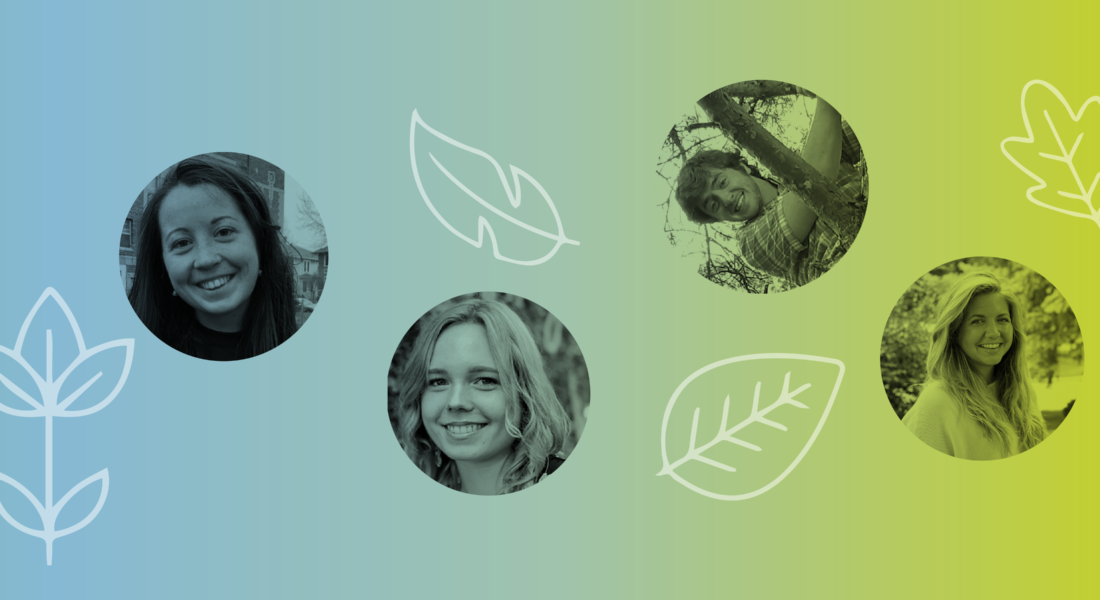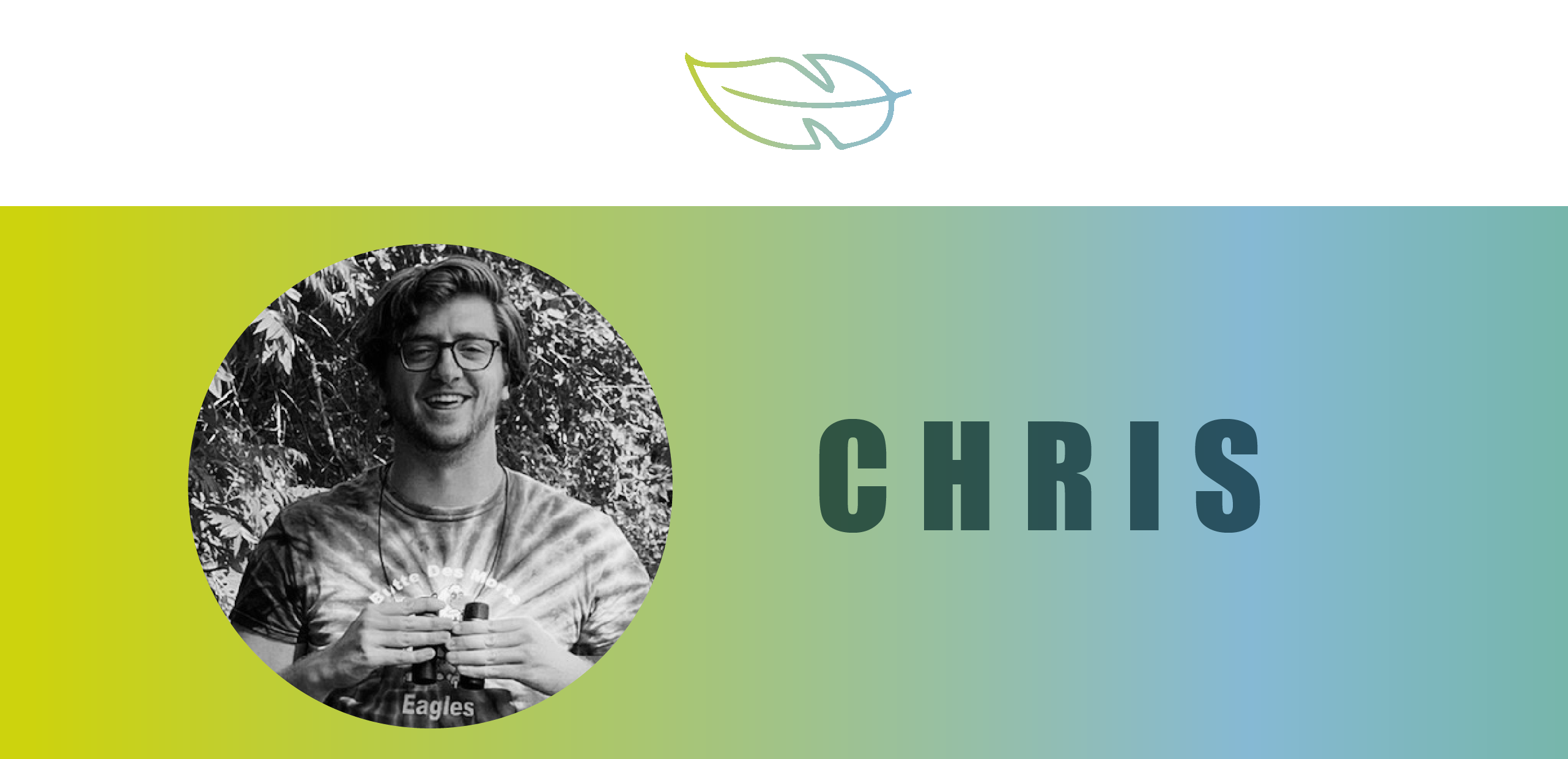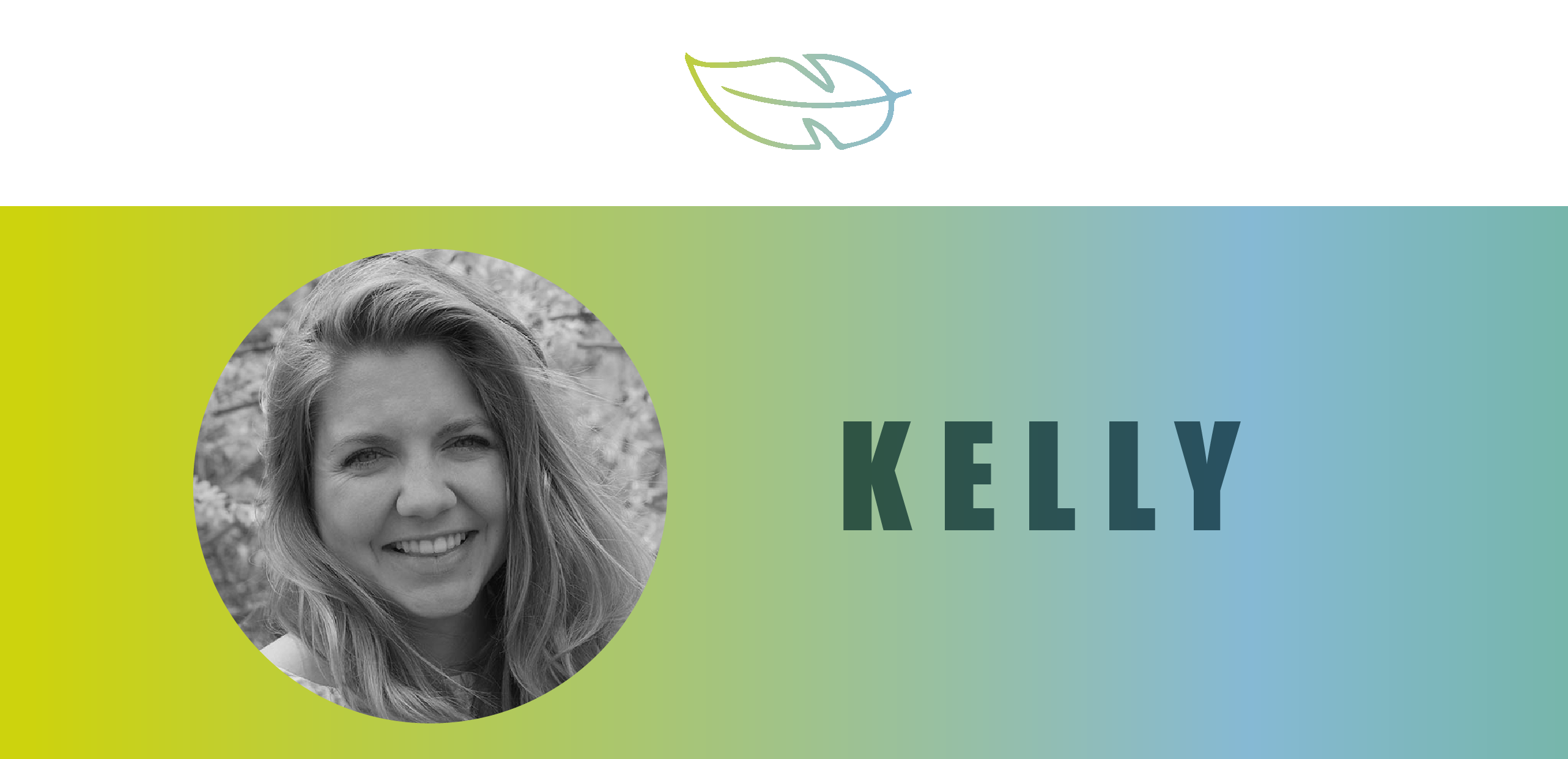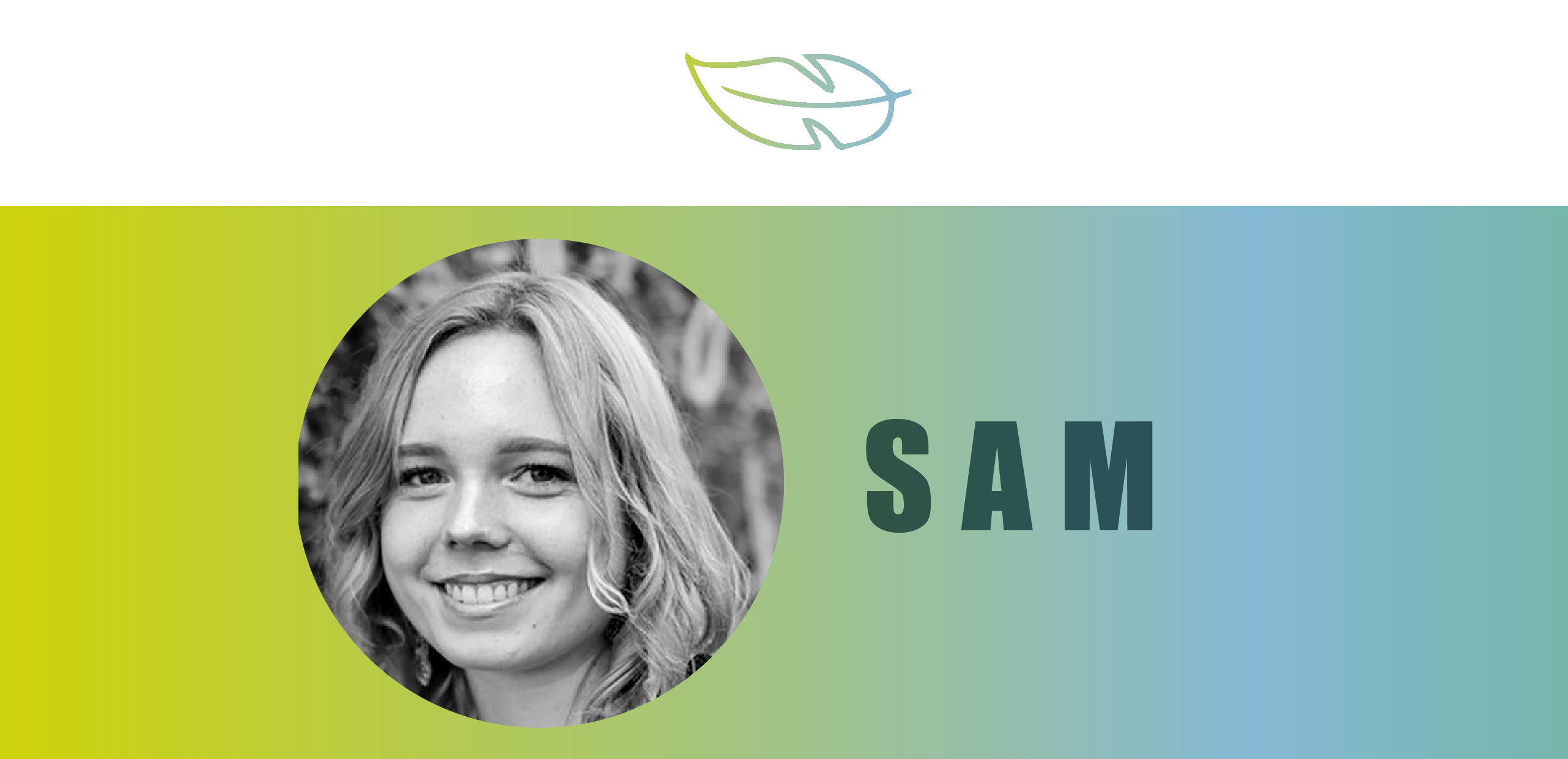
Meet the Naturalists
Caroline, Chris, Kelly, and Sam share their nature notes and tips.
As Camp Fire Minnesota Naturalists, Caroline, Chris, Kelly, and Sam wear many hats. Whether they’re leading activities with youth, creating distance learning lessons, or serving as all-around nature experts, their work remains rooted in curiosity and a passion for the outdoors. Learn about this talented group, find out what they’re working on, and read their recommendations for how you can enjoy nature safely.

Caroline (she/her)
Favorite My Nature Connection lesson she’s worked on: Abloom with Aquaponics
Nature-based activity she recommends for youth: “If kids have access to bikes, biking can be a great way to be with people – but in a socially-distant way – and see the city.”
On her path to becoming a naturalist: After high school, Caroline moved to Chicago for 2 years where she studied journalism. “I liked writing stories about environmental justice initiatives in the city – like the different ways people were farming sustainably in Chicago or stories of how the unhoused population has to navigate space and laws there. I eventually fell out of love with journalism but still wanted to do something with environmentalism.”
What are you looking forward to?: “Currently we don’t get to do our favorite part of the job, which is interaction and relationship-building with kids in the outdoors. But I’ve really enjoyed getting to plant, harvest, and maintain the garden at Tanadoona. We also had the opportunity earlier this summer to work with Integrated Arts Academy and lead some socially-distant team-building activities. I also continue to think about new ways to run activities with kids during COVID. Figuring out, ‘how can we do this in a healthy way?’ and ‘how can we write new lessons and activities that are safe to do?’ because, at least for the kids we worked with, all of them were so excited to just be doing something different – to be outside and playing games.”
Chris (he/his)
Favorite My Nature Connection lesson he’s worked on: Wind Energy
Nature-based activity he recommends for youth: “Go on hiking or biking trails. Most trails are wide enough so that you have enough space to yourself.”
On spending time in nature: “I was really lucky growing up because right behind our house, we had a creek so you could see fish swimming and herons taking off and landing all the time. I find nature relaxing and calming. It can be a pretty stressful time if you’re at home and not able to go to school. It’s easy to feel cooped up. Nature is a good way to get outside, breathe some fresh air, get a little exercise. It’s good for both your physical and mental health.”
What are you looking forward to?: “I’m excited to start working with students in-person again, and figuring out how to work with them in a safe, socially-distant way. I’m also really excited about opening up Tanadoona for picnics. It’s a great space and I know we’ve all put a lot of time and effort into it. I’m happy we get to share this with other people.”

Kelly (she/her)
Favorite My Nature Connection lesson she’s worked on: Make your own Rainstick
Nature-based activity she recommends for youth: “Kids and families can really focus on getting to know the areas where they live. Try to figure out what animals live there and what kind of plants you can find near your home. What are some cool trails? What’s an urban park that you can explore?”
What’s your favorite part of your position?: “My favorite part is getting to work with kids, but since we can’t do that because of COVID, I’ve also enjoyed coming up with My Nature Connection lessons. We have a lot of freedom in what we create and so I get to look at lessons from the lens of ‘what would I have loved as a kid?’ and then I get to make that lesson to share with kids. For example, with the ‘Rainstick’ lesson, I combined arts and crafts with a little bit of science and culture. But in the back of my mind I was thinking about my Special Education background and how to create sensory-friendly activities for kids who might benefit from the calming effect of the rainstick sound. I got to combine all of my interests and background into one lesson.”
On the importance of nature-based education: “Schools are often telling kids what they need to learn and what they need to focus on. Whereas, when you bring kids outdoors, they can explore anything and they can take the lead on what they want to talk about or observe. You can follow their interests and get excited about what they’re excited about. It gives them more freedom and agency to decide what they learn.”

Sam (she/her)
Favorite My Nature Connection lesson she’s worked on: Tanadoona Watersheds
Nature-based activity she recommends for youth: “Swim in a lake or go out into nature with a tree identification booklet. See how many trees you can identify this summer.”
On becoming a naturalist: “When I was younger, I actually didn’t enjoy camping or being in the outdoors. I liked hiking but I like home and having the comfort of knowing where I am. But when I got to high school, I had a teacher who told me about his internships in Alaska. He described how freeing it felt to be able to set up a tent wherever he was and just sleep there and study Alaskan Salmon. I then took environmental education courses with him throughout high school. I also did a backpacking trip with my summer camp where we hiked in Superior National Forest. We traveled 70 miles over the course of 7 days. I wanted to do environmental education work after that.”
On spending time in nature: “Nature is one of the last things left that you can do that is still socially-distant, especially in Minnesota. For example, Minneapolis has that goal of having every home be within a 10-min walk to a park. It’s super important to get outside, get away from your workspace and home and – for a lot of kids – your school space. I think it’s important to give yourself some time in nature and enjoy what we’ve got.”